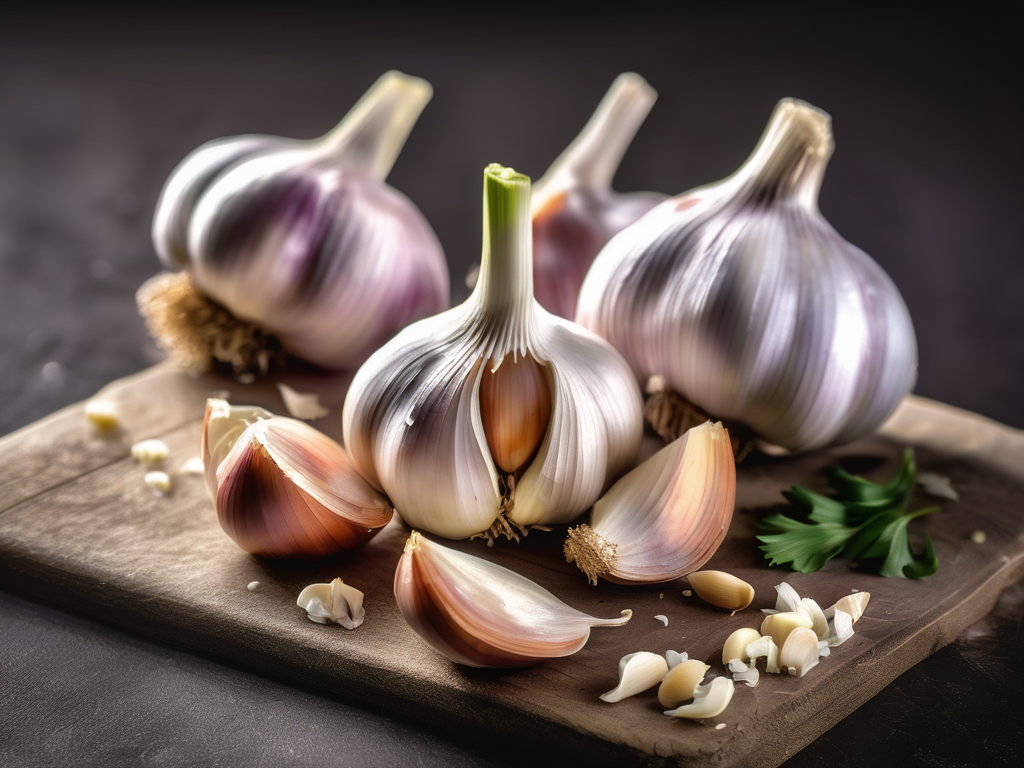
Maximizing Shelf Life: Proper Storage of Unopened Commercially Packaged Garlic Paste
Get Your Free Food Safety Cheat Sheet
30 most common foods with instant answers. Print it and stick it on your fridge—completely free!
Maximizing Shelf Life: Proper Storage of Unopened Commercially Packaged Garlic Paste
Garlic paste is a versatile and flavorful ingredient commonly used in various cuisines around the world. It adds depth and aroma to dishes, making it a staple in many kitchens. To ensure the quality and shelf life of unopened commercially packaged garlic paste, proper storage is essential. In this guide, we will explore the best practices for storing garlic paste to maximize its shelf life and maintain its flavor. (Garlic)
Understanding Garlic Paste
Garlic paste is made by grinding fresh garlic cloves into a smooth, paste-like consistency. It is often sold in commercially packaged jars or tubes, making it convenient to use and store. Garlic paste is known for its intense flavor and aroma, making it a popular choice for cooking and seasoning dishes.
Benefits of Garlic Paste
- Convenient and easy to use
- Intense flavor profile
- Long shelf life when stored properly
Factors Affecting Shelf Life
Several factors can impact the shelf life of unopened commercially packaged garlic paste. Understanding these factors can help you store the product correctly to extend its freshness and quality.
Factors to Consider
- Storage Conditions: Proper storage is crucial to maintaining the quality of garlic paste.
- Packaging: The type of packaging can affect the product's shelf life.
- Temperature: Temperature fluctuations can impact the stability of the product.
- Exposure to Light: Light exposure can degrade the quality of garlic paste over time.
Best Practices for Storing Garlic Paste
To ensure the longevity of unopened commercially packaged garlic paste, follow these best practices for storage:
1. Store in a Cool and Dark Place
- Keep the garlic paste away from direct sunlight and heat sources.
- Optimal storage temperature is between 50-70°F (10-21°C).
2. Check the Expiry Date
- Always check the expiration date on the packaging before purchasing.
- Use the oldest garlic paste first to maintain freshness.
3. Seal the Container Properly
- Ensure the jar or tube is tightly sealed after each use.
- This helps prevent air and moisture from entering, which can degrade the product.
4. Avoid Contamination
- Use clean utensils to scoop out the garlic paste.
- Avoid double-dipping to prevent contamination.
5. Refrigerate After Opening
- Once opened, store the garlic paste in the refrigerator.
- Check the manufacturer's recommendations for specific storage guidelines.
Safety Tips for Handling Garlic Paste
While commercially packaged garlic paste is generally safe to consume, it is essential to follow proper handling and storage practices to prevent contamination and spoilage.
Safety Guidelines
- Check for Signs of Spoilage: Discard the garlic paste if you notice any unusual odor, color, or texture.
- Use Clean Utensils: Always use clean utensils to scoop out the paste to prevent contamination.
- Follow Storage Instructions: Adhere to the recommended storage guidelines provided by the manufacturer.
Conclusion
Proper storage of unopened commercially packaged garlic paste is crucial to maintaining its quality and flavor. By following the best practices outlined in this guide, you can maximize the shelf life of garlic paste and enjoy its culinary benefits for an extended period. Remember to store the paste in a cool, dark place, seal the container tightly, and refrigerate it after opening to ensure optimal freshness. By taking these simple steps, you can make the most of this versatile ingredient in your cooking endeavors. Garlic (Garlic)
Authoritative Food Safety References
These agencies and university labs inform every tip and health precaution we publish.
USDA FoodKeeper – Cold Storage Guidelines
Official refrigerator, freezer, and pantry timelines maintained by the U.S. Department of Agriculture.
Visit USDA FoodKeeperFDA Produce Safety Rule & Grower Guidance
Field-to-fridge handling practices that prevent contamination of fruits, vegetables, and leafy greens.
Visit FDA Produce SafetyCDC Foodborne Illness Prevention Hub
Surveillance-backed guidance on pathogens, symptoms, and steps to reduce foodborne illness risk.
Visit CDC Food SafetyUC Davis Postharvest Technology Center
University research detailing optimal storage atmospheres for produce after harvest.
Visit UC Davis PostharvestPenn State Extension – Home Food Preservation & Safety
Peer-reviewed extension bulletins on safe canning, chilling, and reheating practices.
Visit Penn State ExtensionGet Your Free Food Safety Cheat Sheet
30 most common foods with instant answers. Print it and stick it on your fridge—completely free! Want more? Upgrade to the complete guide with 70+ foods.
Scan your food directly and get instant safety info using our AI-powered camera feature.